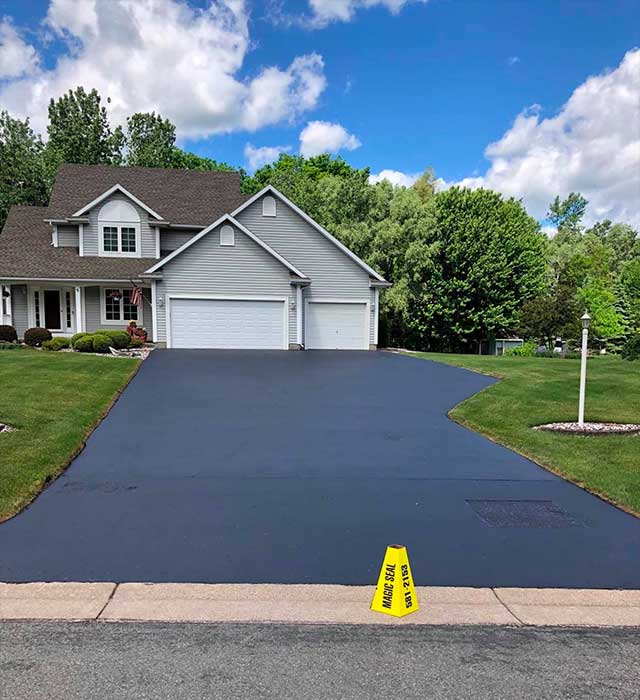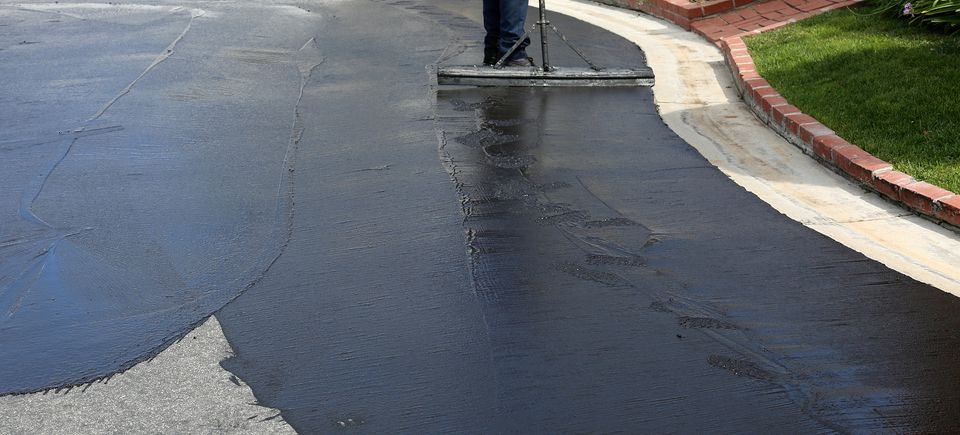Mastering Angled Parking: How Asphalt Sealing Enhances Industrial Great Deals
Mastering Angled Parking: How Asphalt Sealing Enhances Industrial Great Deals
Blog Article
Hot Mix Asphalt: A Sustainable Remedy for Pavement
Hot Mix Asphalt (HMA) has emerged as a leading lasting option for sidewalk options, providing a myriad of ecological benefits and innovative modern technologies. As the demand for environmentally friendly building and construction methods grows, exploring the subtleties of HMA's sustainability can provide useful insights right into the future of sidewalk solutions.
Ecological Benefits of Hot Mix Asphalt

Furthermore, Hot Mix Asphalt aids to reduce city warm island results. Its dark color takes in sunlight, lowering the amount of warm mirrored back into the environment contrasted to lighter-colored sidewalks. This can lower ambient temperature levels in urban areas, reducing the need for air conditioning and inevitably reducing energy consumption.
Additionally, Warm Mix Asphalt contributes to improved stormwater management. Its porous nature enables water to penetrate the sidewalk and reenergize groundwater products, decreasing runoff and the danger of flooding. These environmental benefits make Hot Mix Asphalt a sustainable choice for paving highways and roadways.
Power Performance in HMA Production
Is power performance an important consider the production of Hot Mix Asphalt (HMA)? Definitely. Power plays a substantial role in the production of HMA, impacting both expense and ecological sustainability. One key element of power efficiency in HMA production is using warm mix asphalt (WMA) innovations (regrading). WMA enables the blending and placement of asphalt at lower temperatures contrasted to standard hot mix asphalt, resulting in reduced energy usage throughout manufacturing. This procedure not just lowers fuel usage however additionally reduces greenhouse gas discharges, making it a more eco-friendly choice.
Moreover, innovations in plant modern technologies have actually led to more energy-efficient HMA manufacturing procedures. By maximizing power usage in HMA production, the sector can lower its carbon impact while maintaining top notch sidewalk materials.
Recyclability of Hot Mix Asphalt
The recyclability of Hot Mix Asphalt (HMA) is a critical aspect of its sustainability and long-lasting ecological impact. HMA is one of one of the most recycled products in the United States, with over 100 million bunches of reclaimed asphalt pavement (RAP) being reused each year in brand-new pavement construction. Reusing HMA supplies several environmental benefits, such as lowering the demand for virgin products, lowering energy intake during production, and decreasing the amount of waste sent to land fills.
The process of recycling HMA involves milling the existing pavement, squashing it into smaller sized pieces, and blending link it with brand-new accumulation and asphalt binder to create a recycled mix. This recycled mix can frequently carry out in addition to or even much better than standard HMA, while needing fewer resources and generating reduced greenhouse gas discharges. By including RAP into new sidewalk projects, road companies can conserve natural deposits, decrease costs, and minimize the ecological footprint of roadway building and construction and maintenance activities. Generally, the recyclability of HMA plays a considerable duty in promoting lasting practices within the pavement sector.

Long-Term Performance of HMA
Asphalt pavements demonstrate longevity and strength over an extended period, reflecting the long-lasting performance of Hot Mix Asphalt (HMA) In addition, innovations in HMA modern technology, such as the use of polymer-modified binders and warm mix asphalt, have even more improved the longevity and durability of HMA pavements. By focusing on top quality building and maintenance techniques, HMA continues to show itself as a sustainable and cost-efficient remedy for lasting sidewalk framework.

HMA: Resilience and Sustainability
Demonstrating both longevity and sustainability, Warm Mix Asphalt (HMA) has come to be a foundation in the construction of resilient pavement frameworks - angled parking. HMA's durability comes from its capability to withstand hefty loads, extreme weather, and high web traffic quantities, making it a reliable option for roadways, freeways, and airport terminal paths. The see this page composition of HMA, which usually consists of aggregates, binder, and filler, plays a critical function in improving its durability and resistance to damage
Moreover, HMA's sustainability hinges on its recyclability and energy-efficient production procedure. The capability to reuse redeemed asphalt pavement (RAP) in brand-new HMA mixtures reduces the demand for virgin materials and reduces the environmental influence of sidewalk building and upkeep. Furthermore, the power efficiency of producing HMA depends on its lower mixing temperature levels contrasted to other pavement products, leading to minimized power usage and greenhouse gas emissions.
Verdict
Finally, warm mix asphalt (HMA) uses a sustainable option for pavement with its eco pleasant characteristics. HMA's recyclability, power effectiveness in production, and long-lasting durability make it an eco-friendly option for road building and construction. By preserving natural deposits, lowering waste, and decreasing greenhouse gas discharges, HMA plays an essential duty in advertising sustainability in framework growth. Its capacity to minimize urban warmth island impacts even more underscores its importance in creating environmentally aware and durable pavement systems.
HMA is one of the most recycled materials in the United States, with over 100 million heaps of reclaimed asphalt pavement (RAP) being reused each year in new pavement building.The procedure of reusing HMA entails crushing the existing pavement, crushing it right into smaller items, and mixing it with brand-new aggregate and asphalt binder to develop a recycled mix.Asphalt sidewalks demonstrate durability and durability over a prolonged duration, reflecting the lasting efficiency of Warm Mix Asphalt (HMA) In addition, developments in HMA innovation, such as the use of polymer-modified binders and cozy mix asphalt, have actually additionally improved the longevity and longevity of HMA sidewalks. The capability to recycle redeemed asphalt sidewalk (RAP) in brand-new HMA mixtures decreases the need for virgin materials and decreases the environmental effect you can look here of sidewalk construction and upkeep.
Report this page